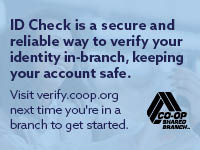There’s nothing like that new-car smell. Buying a new car has a lot of allure: It’s brand new and it’s all yours; nobody has abused it. You can get the vehicle equipped just the way you want, and you get the full factory warranty. But hold on. Your best deal could well be a late-model used car.
The used-car market has changed dramatically in the past few years. To start with, today’s new cars — and thus used cars — are simply made better. Overall quality and durability has increased as U.S. manufacturers pushed hard to catch up to imports. A second factor is the rise of leasing.
New used-car superstore chains are also making it easier than ever to buy with huge inventories and no-haggle shopping. The kicker is that if you opt for a 3-year-old model instead, you could save as much as 30% to 40% over new.
In the last few years, car dealers, backed by manufacturers, have introduced what they call “certified” used-car programs for newer used cars (usually up to 3 years old). Manufacturers insist that a used car must pass a series of inspections before it can become certified. And once a car passes, the manufacturer adds a fresh warranty, sometimes 12 months or more.
If you want a used car, start by checking prices of the vehicles that interest you. Among the best websites areEdmunds.com and Kelley Blue Book’s KBB.com. Both are free, and both will let you check the going prices for almost every make, model and year you could want. (Both sites list new-car prices as well.)
Sites like Autotrader.com and Cars.com list classified ads for used cars, mostly from dealers. Enter your zip code and you’ll get a selection of cars within 100 miles or so of your home. While ads for these same vehicles undoubtedly also are running in your local paper, you get more detail online.
For those willing to venture farther from home, eBay Motors, part of the eBay auction site, lists used cars for sale. You can restrict your search to cars in your area, but you’ll probably do better by looking at cars all around the country. eBay provides various protections, as well as partnerships with used-car inspection services, to take some of the worry out of buying a used car entirely online. Read the eBay Motors “How to buy” page and see if you feel comfortable with the process.
Once you zero in on some possibilities, you need to double-check them. Unless you are buying a certified used vehicle, spend a little extra to check any specific car, truck or van you are close to buying.
First make sure the odometer is honest and that the car has never been totaled. (The used car business may have become less sleazy than it used to be, but problems still do occur.)
Firms like Carfax and Autocheck will track down the history of your prospective vehicle by its Vehicle Identification Number (VIN), usually listed on a metal plate just inside the windshield. If, for instance, the car had 50,000 miles when its title last changed but now shows 30,000 miles, take a pass. If the car has ever been sent to a junkyard, a salvage title will show up on the report. About one in 10 cars in its database has some kind of problem, say Carfax officials.
Once a car has passed those big hurdles, you still need to get it checked by your own mechanic, if you have one. If you don’t, many cities have specialized mechanic services that will make on-the-spot inspection of used cars. If you are considering spending $15,000 for a used car, that $100 to double-check it may be well spent.
If you’re buying on eBay Motors, they’ve got an auto inspection agreement with SGS Automotive. Sellers can have their car inspected and a report posted for potential buyers to see.
The most important thing to remember: Anything’s negotiable except the right to inspect. If the seller won’t let you and your mechanic inspect the car, walk away, no matter how nicely it runs.
Often, this rule of thumb means you’ll be buying from an individual rather than a dealer, for many dealers don’t allow inspections. Those who do typically won’t let you take the car off the premises and won’t let you use their lift.
Unless you have an unusually close relationship with your mechanic, he’ll want you to bring the car to his shop. This isn’t unreasonable, a lift is essential for hunting out rust, worn brake drums and deteriorating exhaust systems. However, a good mechanic can tell a lot from sliding underneath the car, inspecting the exterior paint for repaired body damage, and checking the odometer reading against actual wear.
Confining your search to individuals usually means you’ll get a lower price — but it’s more time-consuming because there’s only one car at each location. Regardless of where you buy, there are some rules you can follow.
Jack Gillis, director of public affairs for the Consumer Federation of America, recommends what he calls the “touch and comment” technique often used by new-car dealers when they inspect trade-ins. “When you review the car, visibly point out the various problems that you note,” he says. “An exaggerated touch of some loose parts or running your hand along body damage can put the seller in a defensive position.”
This tactic can be used effectively when your mechanic is conducting an inspection within earshot of the seller. Have your mechanic mention each problem, allowing you to comment grimly.
Having your expert on hand can make all the difference because even if you know a lot about cars, you need an expert witness to present the damning evidence. Like any expert witness,mechanics must be paid. Some shops offer a pre-purchase checkout for a set amount that can vary widely depending on the shop and the procedures performed. Others offer on-premises inspections for their hourly labor rate, which can range from $40 to $70 an hour, depending on the region and the type of shop.
While indispensable, your mechanic is your consultant, not your agent. To get the best possible deal on a used car, you must do some work yourself. Some pointers:
– Before going to look at cars, peruse the Official Used Car Guide of the National Automobile Dealers’ Association. It lists recent prices fetched by specific year models in your region. The range between the trade-in value and retail value is your room to maneuver. If you can buy a decent car from a dealer for less than its NADA book trade-in value, more power to you.
– If the seller touts the car as an immaculate jewel, be sure to negotiate an acceptable price before bringing in your mechanic. Failing to do so could leave you with no bargaining leverage if the car actually is in great shape. Make sure the seller understands that the agreed-on price is entirely contingent on the vehicle making Phi Beta Kappa. Once your technician determines the car’s shortcomings — and there are few used cars on the market without any — it’s your job to put a generous price on each repair needed. After all, you intone, the initial figure was based on perfection.
– Before buying, try to arrange a test drive at night and another on a rainy day. Nothing reveals a cheap windshield like oncoming headlights, and a replacement windshield may mean the car’s been wrecked and then given a convincing paint job. Also, it’s impossible to know if trunk and door seals are leaking except when it’s raining. Again, leaking seals may mean that the car’s been wrecked, especially on a car only a few years old.
There is a point at which too many glitches should eliminate the car from consideration. Says automotive author Mortz Schultz: “If you find a major problem, or if you rack up enough minor ones, forget the car.”
In return for your rigors, do you get an absolute assurance that you won’t regret the purchase? Of course not. It’s still a used car, after all. Buyers must accept the occasional ping, ding or rattle. But if your mechanic is competent, and you negotiate adroitly, you can get a great vehicle for a substantially lowered price.
If you decide, however, that you really want a new car, you have a different choice to make: Should you buy or lease?
H/T Source: CNN Money


